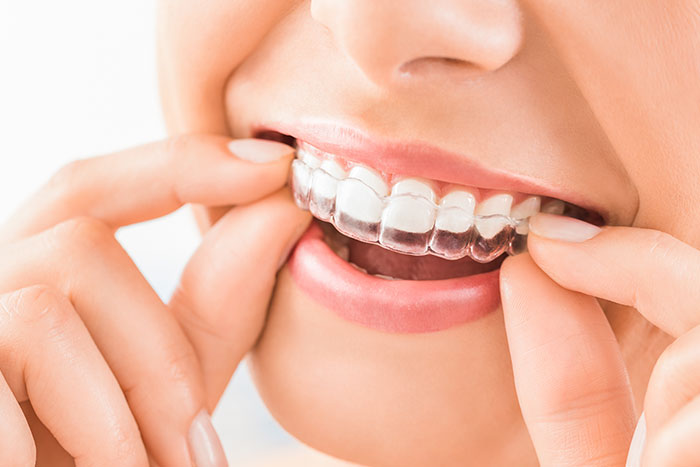Invisalign is a type of orthodontic treatment that uses clear, removable aligners to straighten the teeth. Unlike traditional metal braces, Invisalign aligners are nearly invisible and do not use metal brackets or wires. Instead, they are custom-made to fit the patient’s teeth and are changed every two weeks to gradually shift the teeth into the desired position. Invisalign aligners are made of a clear, flexible plastic material that is designed to be comfortable and virtually invisible when worn. They are removable, so patients can eat, brush, and floss as normal, and they are also easy to clean.
Invisalign is often used to treat a variety of orthodontic issues, including crowding, spacing, overbite, underbite, and crossbite. The treatment process involves several stages, starting with a consultation with an orthodontic specialist to determine if Invisalign is appropriate for the patient. If so, the orthodontist will take impressions and images of the teeth, and use these to create a customized treatment plan.
The treatment process involves wearing the clear aligners for 20 to 22 hours a day, and changing to a new set of aligners every two weeks. Regular check-ups with the orthodontist are required to monitor progress and ensure the teeth are moving as planned.
Invisalign is a popular and effective alternative to traditional braces, and is often chosen by patients who are seeking a more discreet orthodontic treatment option. However, it is important to note that not all orthodontic cases are suitable for Invisalign, and that a consultation with an orthodontist is necessary to determine if it is the right treatment option for the patient.
In summary, Invisalign is a type of clear, removable orthodontic treatment that uses a series of custom-made aligners to gradually straighten the teeth. It is a popular and effective alternative to traditional braces, and provides patients with a virtually invisible, comfortable, and convenient solution to improve the appearance and function of their smile.

